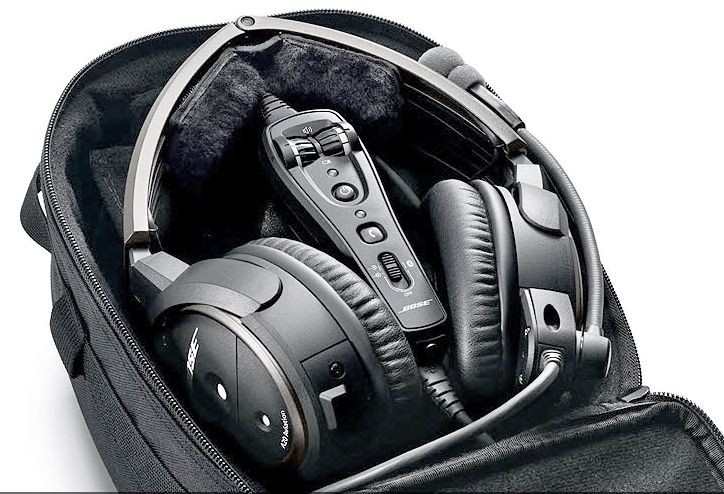

#1989 BOSE AVIATION HEADSET SERIES#
“Within a month or so we found our first market: general aviation.” Bose started manufacturing its Aviation Headset Series 1 in 1989, the first commercially available noise-canceling headphones for private pilots. “That got a bunch of attention,” says Gauger. With Bose’s headphones shielding their ears, Rutan and Yeager made their nine-day, nonstop flight that December. They got the go-ahead and started work on prototypes. In August 1986, the two Bose engineers showed up unannounced at Rutan’s door, and gave a demonstration of the noise-canceling tech. The risk of permanent hearing damage increases at noise levels of 75 decibels and greater when you’re exposed to it 24 hours a day, as the Voyager pilots would be.

“We had 110 decibels in the cockpit,” says Rutan. Error Microphone: Positioned near the ear canal, this constantly monitors the ratio of signal-to-noise entering the ear and relays the info back to the circuitry for necessary adjustments.Įight years and around $3 million of development later, Gauger and his colleague Roman Sapiejewski heard news of former USAF pilot Dick Rutan and co-pilot Jeana Yeager’s upcoming attempt to circumnavigate the globe in the Rutan Voyager, without stopping to refuel.With the music off, only muffled noise hits your ears. Speaker: Receiving data from the circuitry, the speaker emits the opposite-phase frequency (alongside your music) to nullify the ambient noise.Noise-Canceling Circuitry: A summing amplifier in the earcup receives the reference mic info and calculates the frequencies opposite to (180 degrees out of phase with) the outside noise.Reference Microphone: Positioned on the outside of the earcup or bud, this mic analyzes all frequencies of ambient sound and routes them to the circuitry inside the headphones.But when it’s tailored to zap unwanted noise, it can be your best friend.Ĭreated by Eleni Dimou using Getty Images system knows feedback can be a nuisance when it’s accidentally generated. Then, you hear only the tunes.Īnyone who’s watched a school principal struggle with an oversaturated microphone and an ancient P.A. Positioned near the entrance to the ear canal, the electret mic picks up sound so the circuitry can compare the noise outside the headphones to what you want to hear-your music-and produce that opposite phase sound. It was composed of high-resistance material providing a permanent charge without needing a ton of voltage and current. So you have to combine a +1 with a –1.” To accomplish this, and make the technology workable enough for mass use, Bose’s team incorporated a couple of crucial innovations of the ’70s, like a small electret microphone. For each one of those, you have to make a noise at the same frequency, of the same amplitude, but the opposite phase. “In order to cancel a noise,” says Dan Gauger, a member of the original engineering squad Bose put together to realize his vision, “you have to take all frequencies. And nobody had put the pieces together in a way that would work for consumer headphones.

Fogel in the ’50s and Paul Lueg in the ’30s had applied for patents on their own versions of the concept, for use in everything from concert halls to helicopters. The idea had precedent-scientists like Lawrence J. By the time he had arrived in Boston, he had scrawled the first steps toward a solution to his sonic problem: noise-canceling headphones. His enjoyment was foiled by the drone of the engines, which overpowered the lightweight headset.įortunately, Bose was a professor of electrical engineering at MIT, and the head of his own electronics company, the Bose Corporation. It was 1978, and he’d planned to kill some of the time on his 3,745-mile flight from Zurich to Boston by listening to music through some new, foam-covered (read: flimsy) headphones that Swissair supplied to the passengers.


 0 kommentar(er)
0 kommentar(er)
